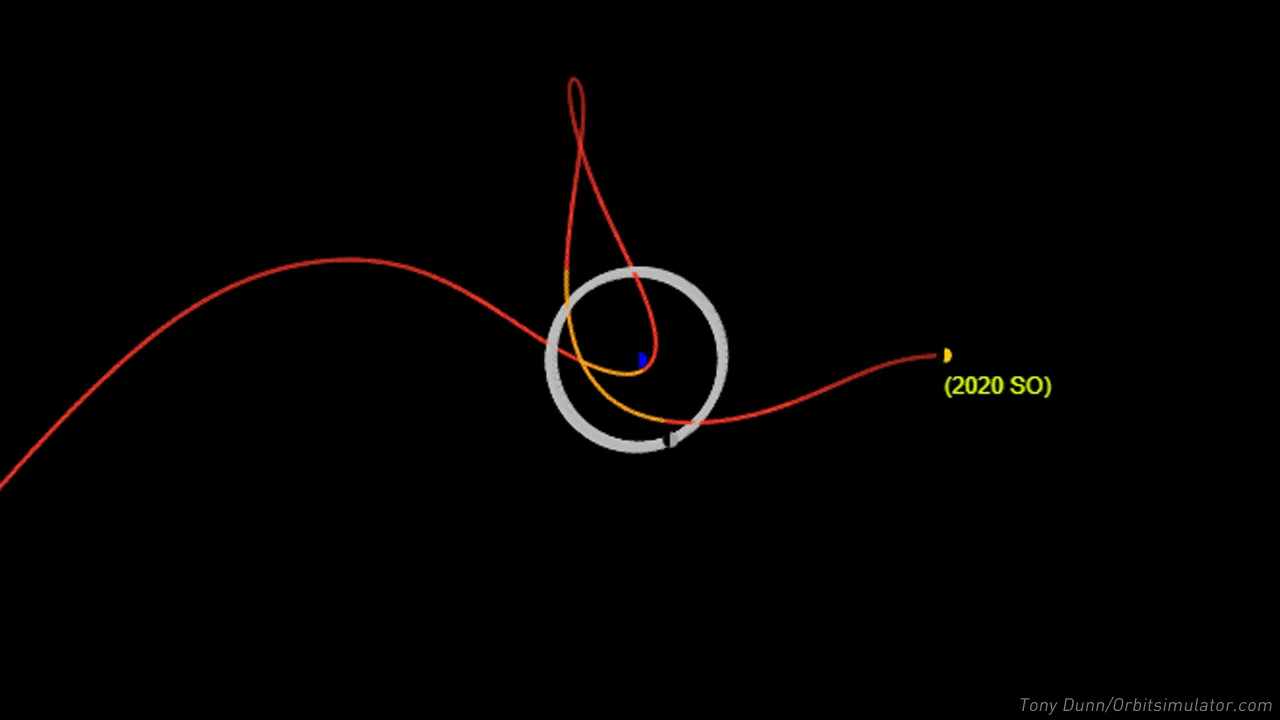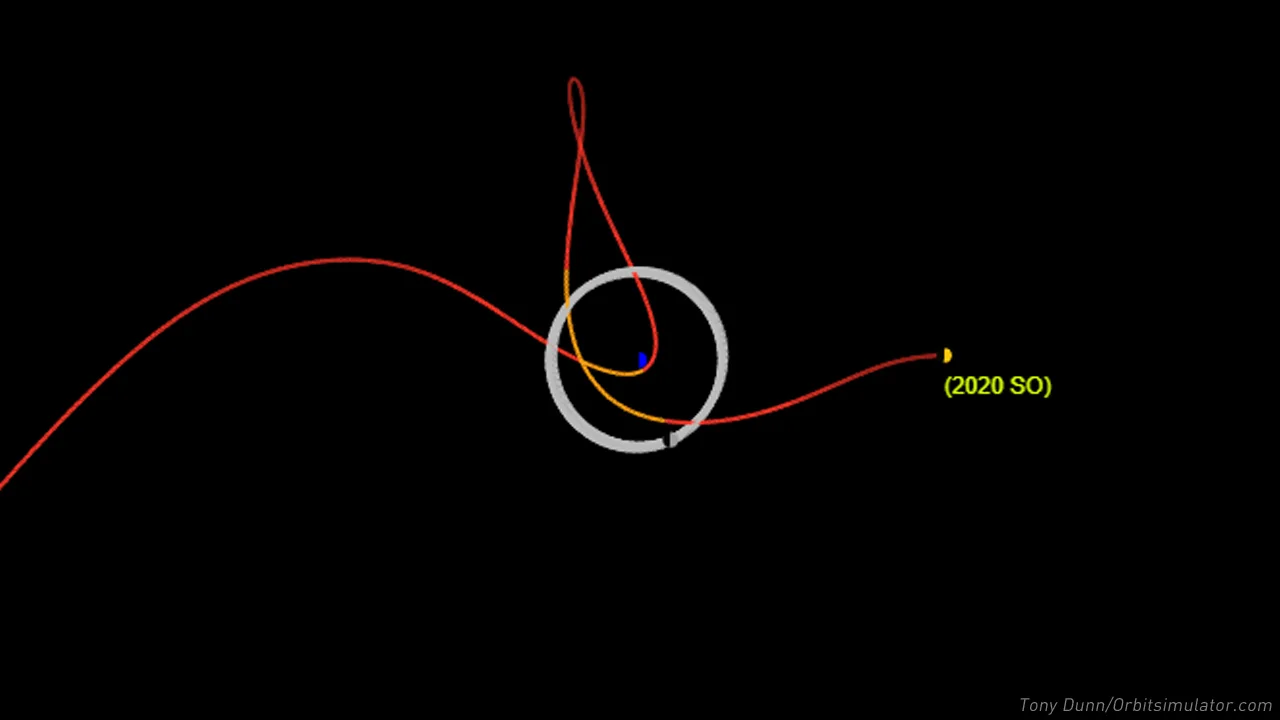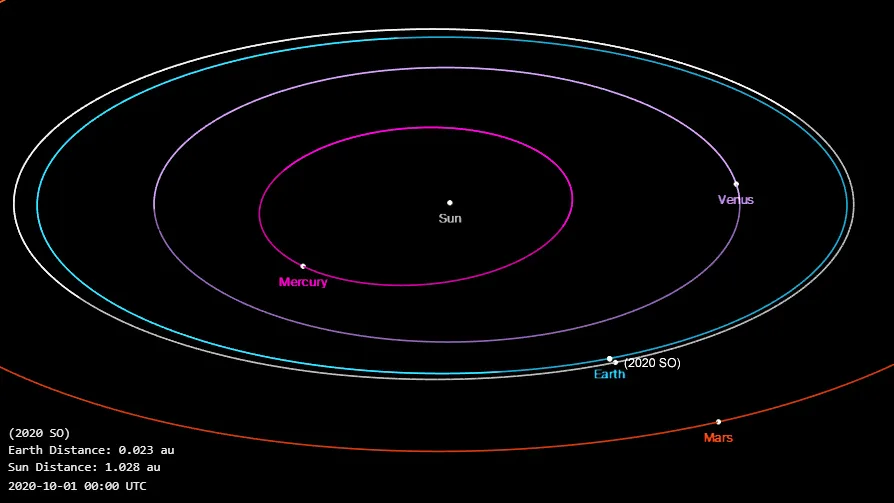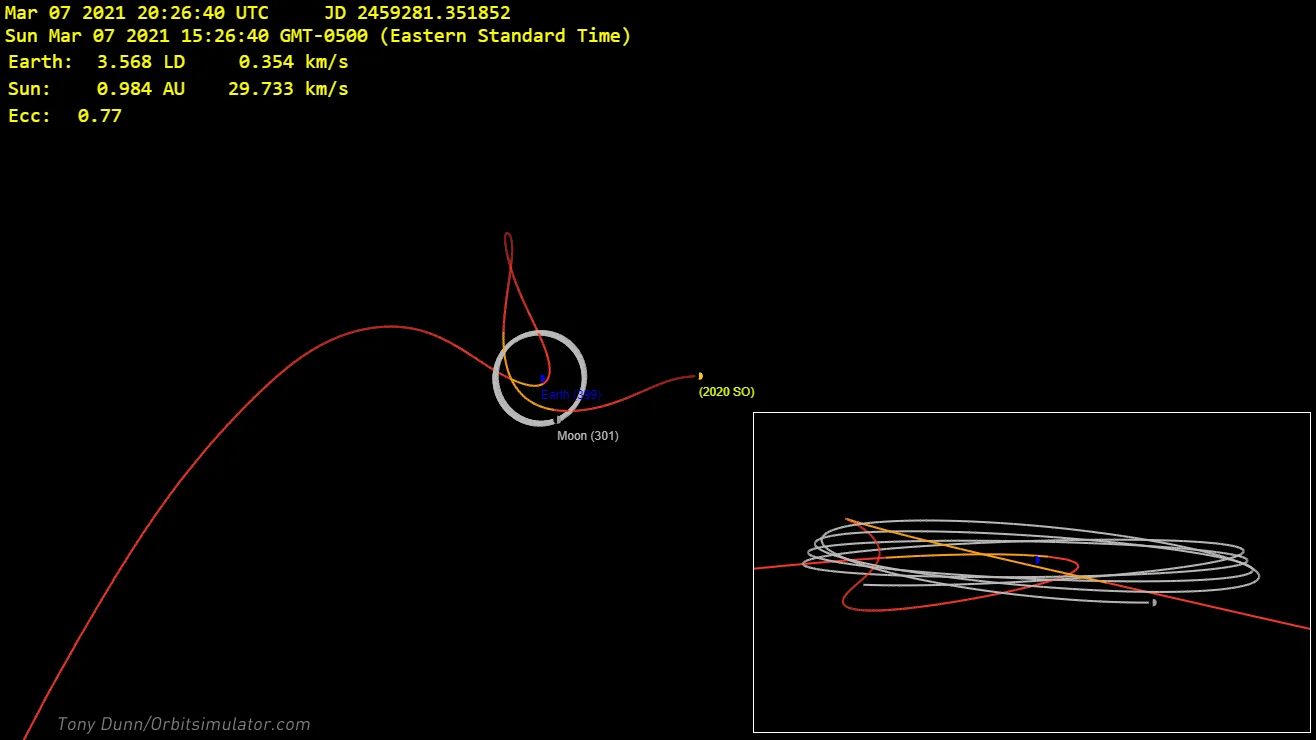
Earth's next minimoon may be an old rocket tumbling through space since 1966
We've seen minimoons before, but apparently not one quite like this
Earth is apparently about to pick up a new minimoon. This is an unusual one, though, as it may not be natural.
There is a lot of debris out in space. Billions of objects are left over from the formation of the solar system. They whiz around the Sun, and every once in awhile, we hear about some of them passing fairly close by our planet. Astronomers are discovering new ones, of all different sizes, all the time. There's also the junk that orbits Earth, which we have been adding to since the first orbital launches in the late 1950s. This includes everything from tiny slivers of metal and flecks of paint, up to defunct satellites and expended rocket boosters.
While these two types of space debris are usually separate from one another, starting around mid-October, we are going to see an interesting intersect between the two realms.
On September 17, 2020, the Pan-STARRS survey at the Haleakala Observatory spotted a new object, which was named 2020 SO. As the survey traced previous unnoticed observations back to August 19, and continued to follow the object, astronomers noticed some unusual aspects to it.
In a tweet posted on September 20, amateur astronomer Tony Dunn posted an animation of 2020 SO's unusual interaction with Earth.
First, as shown above, it appeared as though it would become the next of Earth's minimoons. A 'minimoon' is better known to astronomers and NASA scientists as a Temporary Satellite or a Temporarily Captured Object. They are tiny asteroids that come close enough to Earth, and are travelling at the right angle and speed, that they slip into irregular orbits around the planet for a short time. Then, due to the influence of various gravitational forces, they zip back out of the Earth-Moon system to continue orbiting the Sun.
If that was it, 2020 SO might have been worth a mention, but it wouldn't be very remarkable. We've had other minimoons. A space rock known as 2006 RH120 was orbiting Earth from September 2006 to June 2007, and it may do so repeatedly, every 20 years. More recently, astronomers discovered 2020 CD3, which could have been looping around our planet since 2015, before flying off in May of this year.

This still image from the orbit simulation of 2020 SO shows its path around Earth and the Moon, from around mid-October, until early 2021. Credit: Tony Dunn/Orbitsimulator.com
What makes 2020 SO stand out from the others is that it appears to be artificial. The biggest giveaway for this was how slow it is travelling.
In late September, an asteroid known as 2020 SW flew between the Earth and the Moon. It came closer to Earth than the ring of the geostationary weather and communication satellites that circle around 36,000 km from the planet. When this space rock passed us, it was travelling at a relative speed of nearly 8 kilometres per second (28,000 km/h).
According to NASA's calculations, when 2020 SO passes the Moon on November 1, on its first inbound orbit as a minimoon, it will be travelling at a speed of only 0.84 km/s (just over 3,000 km/h) relative to Earth. Also, its orbit around the Sun is a close match to Earth's orbit.

This orbit diagram shows how 2020 SO's path around the Sun closely matches that of Earth. Credit: NASA CNEOS
That's pretty unusual for an asteroid. As it turns out, though, it's not unusual for a rocket that was launched 54 years ago.
"I suspect this newly discovered object 2020 SO to be an old rocket booster because it is following an orbit about the Sun that is extremely similar to Earth's, nearly circular, in the same plane, and only slightly farther away the Sun at its farthest point," Paul Chodas, the manager of the Center for Near-Earth Object Studies (CNEOS) at NASA's Jet Propulsion Laboratory, told CNN.
"That's precisely the kind of orbit that a rocket stage separated from a lunar mission would follow, once it passes by the Moon and escapes into orbit about the Sun," Chodas explained. "It's unlikely that an asteroid could have evolved into an orbit like this, but not impossible."

This still image from the orbit simulation of 2020 SO shows its path around Earth and the Moon from two different angles. The red portions of its orbital path indicate when the object is below the ecliptic plane, while orange is when it is above, revealing the odd looping path. Credit: Tony Dunn/Orbitsimulator.com
The likely candidate, according to Chodas, is the Atlas-Centaur booster rocket that launched NASA's failed Surveyor 2 lander to the Moon in 1966.
The September 20 launch went off without a hitch, and the Atlas-Centaur rocket put Surveyor 2 on target for touchdown in a region of the Moon called Sinus Medii. While the lander suffered a failure and crashed, nearly three days later, the rocket itself continued on past the Moon, to enter an orbit around the Sun. NASA lost track of it then, but now, it may be back.
"In a month or so we will get an indication of whether or not 2020 SO really is a rocket body, since we should start being able to detect the effect of sunlight pressure has on the motion of this object: if it really is a rocket body, it will be much less dense than an asteroid and the slight pressure due to sunlight will produce enough change in its motion that we should be able to detect it in the tracking data," Chodas told CNN.
Keep an eye out for updates on this unusual space object!
Sources: Tony Dunn/Orbit Simulator | Earthsky | CNN | NASA CNEOS











